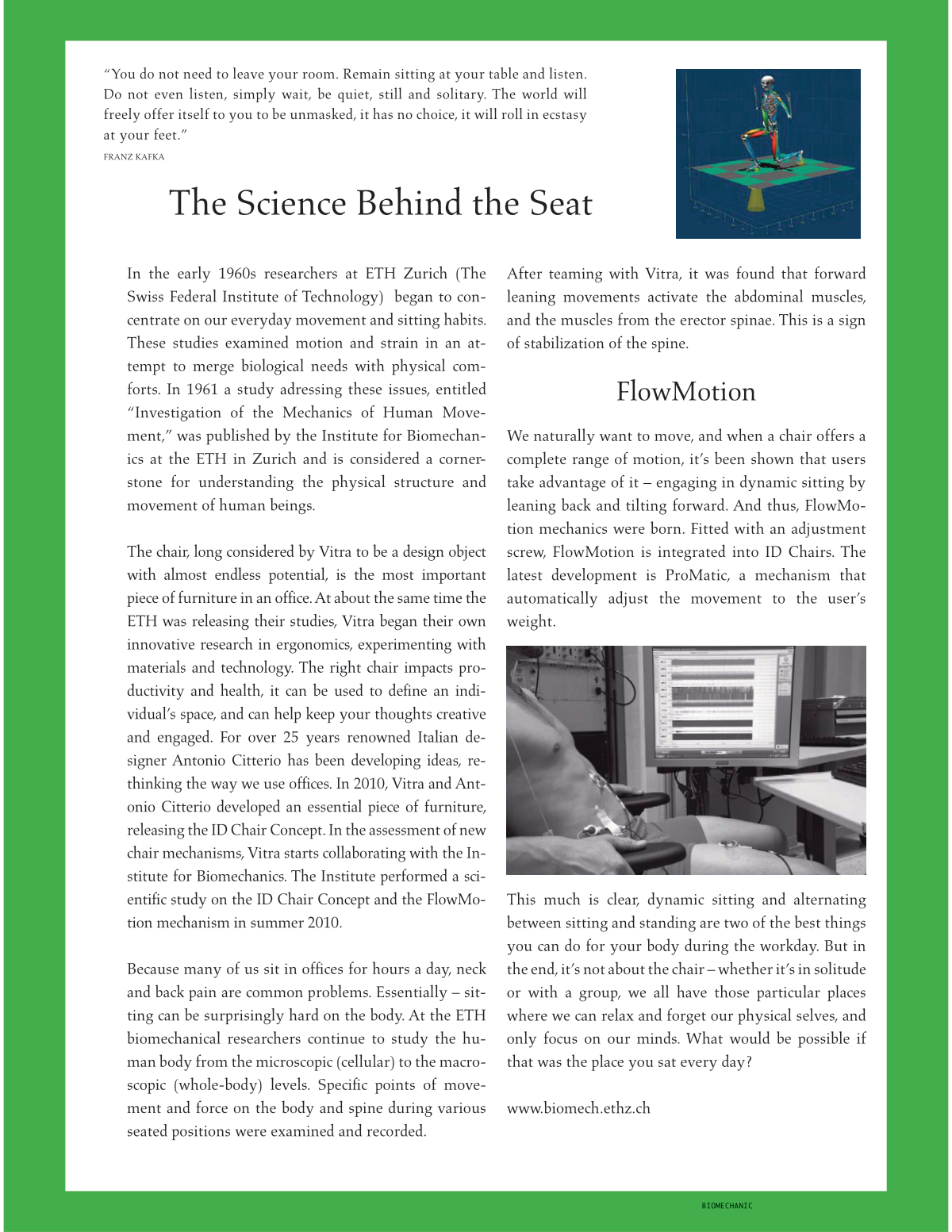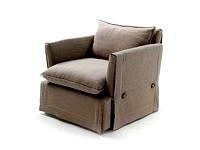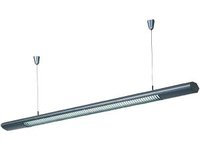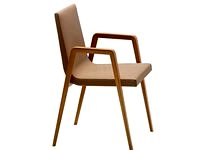BIOMECHANIC
“You do not need to leave your room. Remain sitting at your table and listen.
Do not even listen, simply wait, be quiet, still and solitary. The world will
freely offer itself to you to be unmasked, it has no choice, it will roll in ecstasy
at your feet.”
FRANZ KAFKA
In the early 1960s researchers at ETH Zurich (The
Swiss Federal Institute of Technology) began to con-
centrate on our everyday movement and sitting habits.
These studies examined motion and strain in an at-
tempt to merge biological needs with physical com-
forts. In 1961 a study adressing these issues, entitled
“Investigation of the Mechanics of Human Move-
ment,” was published by the Institute for Biomechan-
ics at the ETH in Zurich and is considered a corner-
stone for understanding the physical structure and
movement of human beings.
The chair, long considered by Vitra to be a design object
with almost endless potential, is the most important
piece of furniture in an office. At about the same time the
ETH was releasing their studies, Vitra began their own
innovative research in ergonomics, experimenting with
materials and technology. The right chair impacts pro-
ductivity and health, it can be used to define an indi-
vidual’s space, and can help keep your thoughts creative
and engaged. For over 25 years renowned Italian de-
signer Antonio Citterio has been developing ideas, re-
thinking the way we use offices. In 2010, Vitra and Ant-
onio Citterio developed an essential piece of furniture,
releasing the ID Chair Concept. In the assessment of new
chair mechanisms, Vitra starts collaborating with the In-
stitute for Biomechanics. The Institute performed a sci-
entific study on the ID Chair Concept and the FlowMo-
tion mechanism in summer 2010.
Because many of us sit in offices for hours a day, neck
and back pain are common problems. Essentially – sit-
ting can be surprisingly hard on the body. At the ETH
biomechanical researchers continue to study the hu-
man body from the microscopic (cellular) to the macro-
scopic (whole-body) levels. Specific points of move-
ment and force on the body and spine during various
seated positions were examined and recorded.
After teaming with Vitra, it was found that forward
leaning movements activate the abdominal muscles,
and the muscles from the erector spinae. This is a sign
of stabilization of the spine.
We naturally want to move, and when a chair offers a
complete range of motion, it’s been shown that users
take advantage of it – engaging in dynamic sitting by
leaning back and tilting forward. And thus, FlowMo-
tion mechanics were born. Fitted with an adjustment
screw, FlowMotion is integrated into ID Chairs. The
latest development is ProMatic, a mechanism that
automatically adjust the movement to the user’s
weight.
This much is clear, dynamic sitting and alternating
between sitting and standing are two of the best things
you can do for your body during the workday. But in
the end, it’s not about the chair – whether it’s in solitude
or with a group, we all have those particular places
where we can relax and forget our physical selves, and
only focus on our minds. What would be possible if
that was the place you sat every day?
www.biomech.ethz.ch
The Science Behind the Seat
FlowMotion







